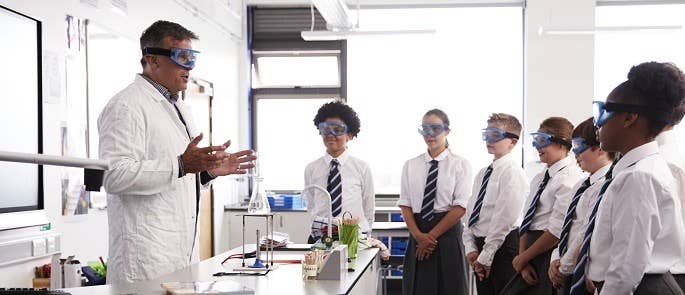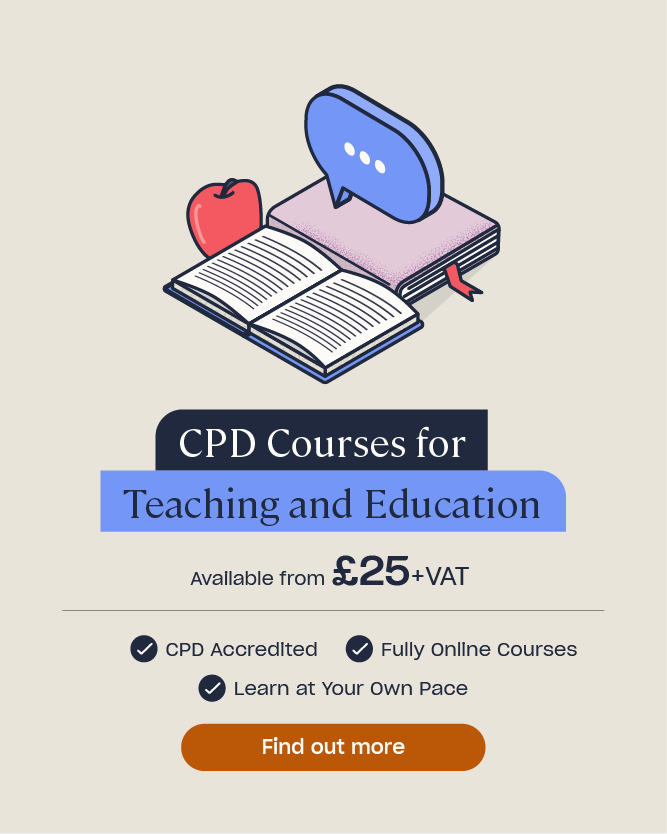What is Effective Teaching?
What is an effective teacher? How can I ensure my teaching is effective? These are questions which continue to fascinate both educators and researchers.
Understanding what constitutes effective teaching is an essential aspect of ongoing professional development – regardless of your job title or length of experience – but keeping up-to-date with best practice can be challenging alongside the everyday pressures and demands of the role. However, gaining a secure understanding of effective teaching and its importance does not have to be a laborious process. Trialling the latest, shiniest strategies can take our attention away from the core components of effective teaching – components which are often very simple to implement and practise within the classroom.
In this article, we will outline what effective teaching means and why it is so important. We will also provide you with a range of strategies that you can use in the classroom to help create the best outcomes for your students.

What Does Effective Teaching Mean?
‘Student progress is the yardstick by which teacher quality should be assessed. Ultimately, for a judgement about whether teaching is effective, to be seen as trustworthy, it must be checked against the progress being made by students.’
Sutton Trust, What Makes Great Teaching?
Effective teaching is the knowledge, strategies, processes and behaviours which lead to good student outcomes. Effective teachers have a positive impact on their students and use their expertise to improve learning. These good outcomes are often those that can be measured easily, usually through summative assessment.
However, it’s also important to remember that not all aspects of effective teaching are immediately visible or measurable. Effective teachers cultivate excellent working relationships with their students within safe and respectful environments. Effective teaching is much more than end-of-year data: it is an ongoing, reflective practice that needs to be refined and amended to suit learners’ needs.
Effective teachers nurture effective learners who are actively involved in their own learning and personal development. They can manage a classroom to remove or reduce instances of behaviour that challenges, introduce new information in an engaging and accessible way, and provoke curiosity in the subject matter to promote higher-order thinking. Effective teachers also love their subject and use their experience and pedagogical knowledge in order to create high-quality learning.

Why is Effective Teaching Important in the Classroom?
‘The best available evidence indicates that great teaching is the most important lever schools have to improve pupil attainment. Ensuring every teacher is supported in delivering high-quality teaching is essential to achieving the best outcomes for all pupils, particularly the most disadvantaged among them.’
Education Endowment Foundation (EEF)
Effective teaching is constantly recognised as one of the key drivers in school improvement. As the popular saying goes, a school is only ever as good as its teachers.
Effective teaching helps students to achieve their goals – both personal and academic. We know that effective teachers can be hugely influential figures to many young people, providing them with both certainty and assurance when they need it the most. Children who feel safe, valued and engaged within the school community will learn better and help to contribute to an improved culture – by promoting positive attitude and behaviour.
Effective teaching can also have a monumental impact on student achievement. Improved relationships with students generate more personalised learning opportunities and greater quality targeted assessment. Being able to capture an accurate snapshot of student understanding helps to boost progress as both teachers and pupils know how to improve learning outcomes.
According to research outlined by the National College for School Leadership, ‘having a very effective, rather than an average teacher, raises each pupil’s attainment by a third of [an examination] grade (Machin and Murphy, 2011).’ Machin argues that bringing the lowest 5-10% of teachers in the UK to an average level would boost both attainment and the nation’s ranking within international leader boards.
It is, therefore, vital that schools equip teachers with the knowledge and understanding they need to be able to deliver effective learning. We know that regular and relevant professional development opportunities can affect much more than student attainment. In a discovery report into teacher retention, government findings indicate that, amongst other recommendations, a greater focus on ongoing professional development would improve both retention and job satisfaction.
CPD for Teachers
Our range of accredited online courses for education professionals cover both compliance and professional development. Explore our course library which includes titles such as SEND in the Classroom, Challenging Behaviour and Child Mental Health.

Characteristics of Effective Teaching
Here are some of the main characteristics of effective teaching, alongside tips on how to practise them successfully within the classroom:
Create a Positive Learning Environment:
A positive and purposeful learning environment can help to bolster any other strategies an effective teacher uses to improve student wellbeing and achievement. It is vital that teachers and schools create an environment conducive to learning – one that is safe, warm, inspiring and respectful. For any teaching strategy to be effective, students’ physical, social and emotional learning environment must support their needs and promote positive outcomes. This includes everything from robust and effective school policies to classroom layout. Among other strategies, teachers can help to create a positive learning environment by establishing clear classroom rules and procedures, maintaining an environment that promotes respect, inclusivity and diversity, and encouraging students to receive and accept constructive feedback. You can find out how to create a positive learning environment in schools here.
Motivate:
In order to create positive learning environments, students need to be encouraged to develop a deep curiosity and admiration for learning – a self-driven desire to learn and achieve. Striking the right balance between intrinsic and extrinsic motivation within the classroom helps to build relationships and promote high academic expectations. You can find out more about the importance of motivation in education here.
Nurture positive relationships:
In a global study by Pearson investigating the perceived components of effective teaching, the need to build trusting compassionate relationships was found to be the most common response from participants. In order to engage and motivate learners, participants stated that effective teachers needed to have a patient, caring and kind personality. Compassion and empathy were also highlighted as being key skills required in order to develop and maintain positive relationships with students.
Understand Classroom Management:
By creating a positive and purposeful learning environment, effective teachers are freeing up students’ capacity to learn by taking away unnecessary classroom stressors, such as behaviour that challenges. You can find out how to set behaviour expectations in the classroom here.

Have strong communication skills:
Effective communication skills will help you to build and maintain positive working relationships with your students, as well as members of the wider school community. As we know, improved relationships can boost progress and achievement. Skills such as active listening can be used to help build trust and make young people feel valued and appreciated. These skills will also help you to forge better relationships with parents and carers. You can find out how to communicate with parents here.
Have secure subject knowledge:
Effective teachers know their subject/s inside out. According to a report by the Sutton Trust, there is strong evidence to suggest that a teacher’s secure content knowledge has a positive impact on student outcomes. Effective teachers combine this deep understanding with strong pedagogical knowledge so that they can understand how students learn. With this knowledge, effective teachers can anticipate common misconceptions their students may have, and adapt their planning to suit individual need.
Be passionate:
Effective teachers express unwavering passion for both their subject and their students’ progress. Modelling this energy for both the subject and student learning can help to inspire your pupils to stay committed and dedicated to their learning.
Provide high-quality learning opportunities:
Effective teachers ensure good student outcomes through high-quality learning. They use all the elements of high-quality teaching to create personalised and relevant learning opportunities. Elements of high-quality teaching include:
- Scaffolding – Scaffolding in learning is seen as a temporary measure that students can use to enhance their learning. Effective teachers can scaffold the learning in order to meet the differing needs of their students. In doing so, they are making the learning accessible and impactful, allowing pupils to build upon their knowledge and understanding. Examples include chunking tasks, front-loading concept-specific vocabulary, and using think-aloud models to demonstrate effective metacognitive thinking. It’s important to note, however, that over-scaffolding can have negative impacts on pupil progress. Effective teachers get the balance just right.
- Using effective instruction – Effective teachers present lessons clearly, ensuring the goals and purpose are accessible to all. They use instructional delivery skilfully to connect students’ knowledge and interests to the learning goals. To improve your instruction within the classroom, you can regularly review learning and provide your students with time to practise and embed skills before they develop the learning further.
- Developing metacognition – Effective teachers equip their students with a range of metacognitive strategies that they can use to control their learning. These strategies help pupils to be more aware of their own thinking – which ultimately helps them to learn better. Examples might include tried and tested problem-solving methods, memorisation techniques when introducing new vocabulary, thinking journals or metacognitive talk – where both the teacher and the student say aloud what they are thinking, before and during a task.
- Using assessment for learning effectively – Teachers use both formative and summative assessment in order to motivate, inspire and challenge learners. Effective assessment can provide teachers with an immediate snapshot of student understanding, which can help to address misconceptions, guide planning and boost progress. Skilful questioning, for example, can help you to engage and challenge your students, as well as consolidate their learning.
Reflect:
Effective teaching also requires reflection. By focusing on your strengths and areas for improvement, you can work out how to improve your teaching in key areas in order to better serve your students. You can do this by welcoming pupil and parent voice and/or seeking out feedback from your department lead and line manager. Reflection can be cumulative or immediate (where you collect students’ day-to-day responses in order to determine whether a certain learning opportunity or assessment strategy has been successful). Being secure in your understanding of how to improve means that you can target professional development to specifically address your needs.

Effective teachers can have a significant impact on a child’s social, emotional and academic development. Their role is vital in ensuring students achieve the best possible outcomes. Effective teachers are always cushioned by the support of good schools who create cultures that prioritise professional development. A school’s role is key in both nurturing effective practitioners and helping them to maintain the best standards of practice.
Further Resources:
- CPD Courses for Teaching and Education
- Effective Communication in the Classroom: Skills for Teachers
- How to Use Assessment for Learning in Schools
- What is Effective Questioning & Why Should I Use it in My Classroom?
- Marking Symbols: A Guide for Primary School Teachers
- What is Adaptive Teaching?
- How to Promote Equality, Diversity & Inclusion in the Classroom
- Ideas for Genius Hour in the Classroom
- Leadership in Education: Hierarchy and Leadership Styles
- What is Active Learning?
- What is Ability Grouping in Education?
- What is Mixed Ability Grouping in Education











